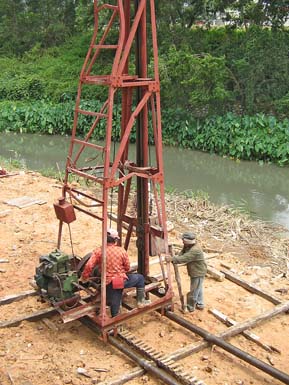WHEN the Asean Economic Community (AEC) was born on the last day of 2015, it signalled that this region of 625 million people was showing real signs of fulfilling its potential. Increased economic vigour in South-east Asia might be seen as beneficial for Singapore, the financial hub at its centre. But could it also threaten that hub status?
Investment is increasingly flowing into regional centres such as Ho Chi Minh City, Manila and Jakarta (not to mention further-flung places such as Hong Kong and Sydney). So when top business leaders arrive in Kuala Lumpur for the World Economic Forum on Asean in June, many will be wondering whether Singapore will be among those to benefit from the birth of the AEC.
The 2008 global financial crisis continues to impact financial centres such as Singapore and Hong Kong. Increasingly stringent regulatory regimes have added to compliance costs and impacted the growth of the wealth management and financial services sectors. In addition, China’s rebalancing of its economy, the world’s second largest, has affected the export growth of countries that are highly dependent on Chinese demand for oil, metals, raw materials and machine tools.
South-east Asian economies aren’t spared. Indonesia and Malaysia are among the biggest commodity exporters to China while Singapore, a key oil refining centre and transhipment hub, has seen weaker manufacturing output and falling exports. Singapore’s higher cost base has also been thrown into sharp focus as companies move back-office functions to lower cost countries, such as the Philippines and India. This has all softened demand for office and industrial space and commercial rents have fallen recently as a result.
Despite these, there are reasons to believe that Singapore’s future continues to be bright, thanks to its well-recognised traditional strengths, and its efforts to become a global Smart City.
The Lion City has established advantages such as excellent infrastructure, low rates of corruption and corporate tax, a good quality of life, and high education standards. Starting a business takes just three days, compared to six in Malaysia and 28 in Thailand. Corporate tax has remained at 17 per cent for the last 15 years.
The post-2008 stringent regulatory regime actually favours Singapore, as it increases the need for a regional financial centre that is secure and comfortable with the rule of law. Political risk and economic volatility will continue to challenge other regional centres, even as they rapidly improve their own infrastructure and connectivity. Singapore’s real estate infrastructure also makes it the location of choice for mission-critical operations. Over the last decade the central business district has grown steadily, thanks to a large increase in employment in financial services and wealth management.
From a global city to a smart one
Where the Lion City really stands out, however, is in the government’s impressive efforts to turn this global city into a Smart City. While other governments react, Singapore is proactive and responsive.
A Smart City first needs a smart infrastructure backbone, and Singapore is at the leading edge. The real estate sector is at the forefront of this, especially with new developments such as Tanjong Pagar Centre and Marina One, both box-ready for the smart revolution.
Clever innovations harness new technologies to cut costs and improve sustainability outcomes such as reducing environmental impacts. Lighting systems and lifts respond to usage patterns, saving energy and money. Smart features are being developed in public housing estates as well as office blocks, for instance in making waste collection more efficient. Singapore has a key competitive advantage in its physical real estate.
Based on JLL’s Benchmarking the Future World of Citiesreport, Singapore is one of the elite Big Six established world cities. The city-state often scores highly in city rankings because of its integrated city management, which includes combined land use, economic development and infrastructure planning. Singapore has comprehensively solved major infrastructure challenges, such as housing and water collection, and continues to rise up infrastructure rankings.
Singapore’s Smart City drive is not just about hardware. The nurturing of the e-commerce sector not only strengthens demand for commercial property, but also opens up wider business opportunities thanks to the AEC’s greater regional integration. The government’s recent push to increase the supply of commercial property has also included projects aimed squarely at the smart economy. JTC Launchpad @ one north, for example, acts as an incubator for start-ups in areas such as bio-medical sciences, media, cleantech and electronics. Projects such as the new Funan Mall and Singapore Post Centre retail mall will integrate both online and offline shopping.
The most important attribute of a Smart City is the understanding that this will all continue to evolve. Anticipating and preparing for new opportunities will be a challenge, even for the proactive Singaporean government, and much depends on retaining a competitive real estate advantage. Rivals from Hong Kong to Shanghai and Sydney will flourish in their own respective markets, but Singapore has what it takes to continue to flourish as the financial and business hub of an increasingly dynamic South-east Asia.












